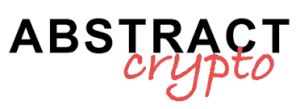Nexo and Sphere respond to the current surge in inflation in Latin America, with a partnership aimed at improving cross-border payments. The idea is to integrate blockchain-based payment solutions, such as stablecoins, especially for the benefit of businesses.
Nexo and Sphere: blockchain solutions for cross-border payments in Latin America
Nexo has formed a new partnership with Sphere, a leader in same-day cross-border payments, to create a blockchain-based solution for Latin America.
In practice, the objective is to improve international commercial payments, by integrating blockchain-based settlement solutions. In this way, transactions become faster (from days to hours), cost-efficient and compliant with regulations, benefiting especially businesses in regions subject to inflationary pressure.
Not only that, the new solution by Nexo and Sphere should be able to streamline treasury management and provide companies with an almost immediate conversion of stablecoin.
And so, in regions like Mexico, Brazil, and Argentina, where the adoption of stablecoins is growing, with Sphere’s APIs, fintech companies can access efficient and almost instantaneous currency conversion for cross-border payments.
At the same time, the integration of Nexo with Sphere allows faster and more convenient cross-border payments for business users.
Stablecoin for cross-border payments in Latin America thanks to Nexo and Sphere
The new agreement aims to combine the cutting-edge infrastructure of Sphere and the expertise of Nexo in the digital asset sector, to further modernize international corporate payments.
In this regard, Arnold Lee, CEO of Sphere, said:
“With the economies of Latin America grappling with significant inflation and currency volatility, our alliance with Nexo is emerging as a true game-changer. By joining forces, we can offer a secure and streamlined environment for everything from everyday B2B transactions to large-scale settlements, significantly reducing the time and overhead costs that companies face.”
In Latin America, even today, companies must face a series of problems when sending money abroad: multiple intermediaries, high fees, and settlement times ranging from three days to a week.
With this scenario, stablecoin have emerged as such a powerful tool that they have come to represent up to 75% of the total volume of on-chain transactions.
The regulation of stablecoin in the USA
Just today, it was also mentioned that at the first hearing of the Senate Banking Subcommittee on Digital Asset of the USA, the regulation of stablecoins was the dominant theme.
Among the notable participants, Tim Massad, former Chairman of the CFTC, Jai Massari, CLO of Lightspark, and Jonathan Jachym, head of policies at Kraken, were listed.
Senator Cynthia Lummis was also present, opening the hearing by discussing bipartisan regulation that can provide certainty to industry operators without stifling technological development.
In any case, at the moment, from what has emerged, it seems that on one hand there is a desire for regulatory clarity in the sector to limit risks and illegal activities, and on the other hand, there is flexibility for the continuous development of these technologies.


